Imagine a landscaper attempting to cut the grass in the dark; that’s a business without SEO—cutting aimlessly in the hopes of getting it correctly. This is our thorough SEO for Landscapers guide, where we outline how to get internet visibility. As a well-kept lawn gets appreciation, so too does a well-optimized website. The foundation of changing your internet presence and making sure your landscaping company thrives online will be laid by this introduction. We want to provide you with SEO tactics made especially for landscaping businesses. And never forget that Plerdy and other tools can be your digital shears, creating masterpieces out of the analytics on your website.
Understanding the Basics of SEO for Landscaping
See SEO as the sunlight that supports the growth of your landscaping company. Growing your landscape business online requires an understanding of SEO concepts.
Glossary
Consider search engine optimization, or SEO, as your online presence’s manure. Use of relevant and focused keywords that potential clients may use while searching for landscaping services improves the search engine friendliness of your website and content. For landscapers, these might be phrases like “residential lawn care,” “local garden landscapers,” or “landscape design services.” Leader in search engine optimization software Moz stresses the value of knowing and employing keywords well. As the correct fertilizers can result in a lush, green grass, so too can each term or phrase direct more traffic to your website.
Value of SEO in Landscaping
Not only as a buzzword, but landscapers use SEO to outperform rivals. More people visiting a well-optimized website can become customers. Particularly important in landscaping is this since aesthetics count. As striking as a well designed garden can be a highly ranked website in search engine results. High-ranking websites get far more visitors, claims Search Engine Journal. More people seeing your landscaping services and portfolio implies more business prospects.
Any landscaper hoping to increase their internet presence has to understand the fundamentals of SEO. Like a properly maintained landscape, your website can climb the ranks by knowing and using efficient SEO techniques. Recall that every step taken in optimization leads to a successful business as we examine SEO for landscapers.
Conducting Effective Keyword Research
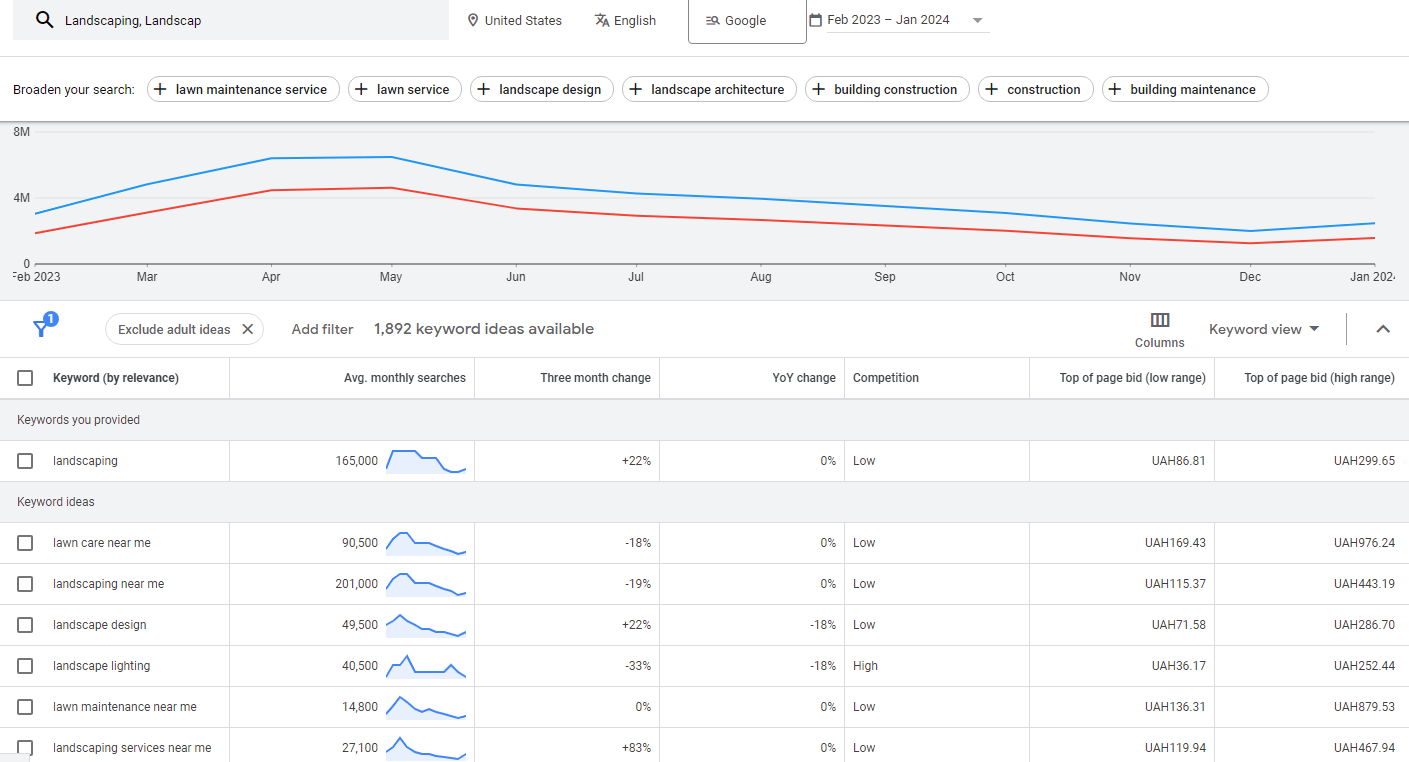
In landscaping, knowing which plant to use where is essential, but in search engine optimization, keyword selection is also important. Let us examine how good keyword research can bring your landscaping website to life.
Resources for Researching Keywords
Starting keyword research requires the proper equipment, much as planning a garden. Here, Google’s Keyword Planner is a landscaper’s shovel. It facilitates finding the words and phrases that your prospective customers are looking for. Using tools like SEMrush or Ahrefs, claims HubSpot, provides deeper insights that show search volume and level of competition in addition to popular keywords. These instruments suggest what’s required for best growth, much like a soil test. Through knowledge of the particular landscaping-related keywords, such “residential landscaping services” or “landscape design ideas,” you may customize the content of your website to correspond with these searches.
Choose the Correct Keywords
Choosing the appropriate keywords calls for knowledge about your target market. Do they want expert landscaping services or advice on how to care for their lawns themselves? Long-tail keywords, or more targeted terms like “sustainable garden design ideas” might attract a more specialised audience, claims Moz. It comes down to striking the ideal ratio of general appeal to specialized knowledge.
Consider it like selecting plants for a landscape plan. There are broad appeal plants (or keywords), and niche plants (or audiences). Here the Google Trends tool can be helpful since it provides information on seasonal patterns in search searches. This information enables prompt content revisions, matching your SEO efforts all year round with the interests of your clients.
Researching keywords effectively for landscaping Finding the appropriate terms is only one aspect of SEO; another is knowing your audience and matching your online presence to their needs. Watch how your website rises the ranks like a well-kept vine reaching the sun as you feed it with the appropriate keywords. Recall that the SEO strategy seeds you sow now can produce a thriving online presence tomorrow.
Optimizing Website Structure and Content

Your website is your digital landscape in SEO. An organized website draws more people, much as a well-designed garden does. Here’s how to enhance the structure and content of your website for search engine optimization.
Site Organization
As hospitable and easily navigable as a well designed garden path should be the layout of your website. Begin by making sure visitors can quickly locate what they need using a simple navigation menu. Included in this might be pages for “Services,” “Portfolio,” “About Us,” and “Contact.” Search engines will comprehend and rank your website more effectively if it is structured appropriately.
Put in a responsive design to make sure your website looks good and works on all devices. As Search Engine Watch noted, Google prefers websites that are mobile-friendly. With more and more people accessing the internet via smartphones, this is an essential SEO element.
Maximizing Content
Much like plants are to a garden, content is the lifeblood of any website. Your articles need to be instructive in addition to being current and search engine friendly. Incorporate the keywords found in your study first. Throughout your body text, headings, and titles, use them naturally.
Key is high-quality material. Put together thorough service descriptions, educational blog entries, and useful manuals. These could prove your landscaping skills, attracting potential customers and making them stay on your website longer. Recall, says Moz, that Google sees your website more favorably the longer visitors stay there.
Your material can also be improved by photos and videos of your landscaping endeavors. As Yoast SEO advises, include alt tags with your photos to increase their search engine discovery.
Comparable to gardening is website structure and content optimization. It calls for frequent maintenance, quality-focused attention to detail. You create the conditions for more visitors, better interaction, and eventually business expansion by making sure your website is well-organized and has interesting and relevant content. Recall that in the digital world of SEO, a well-maintained website yields the most benefits.
Leveraging Local SEO for Landscapers
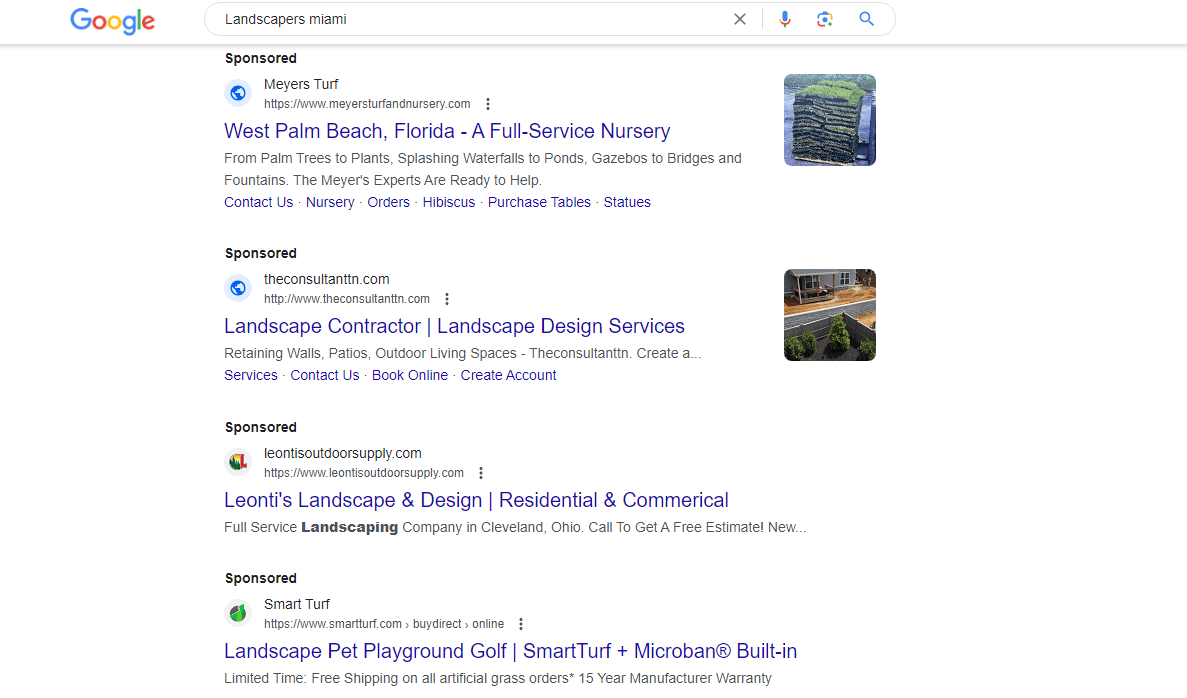
For landscapers, local SEO is like putting the right tree in the right place; it all comes down to determining which local market niche best suits your company. Let’s investigate how your landscaping firm might expand in your neighborhood with the use of local SEO.
Setting Up Google My Business
Creating and honing your Google My Business (GMB) listing is a crucial first step in local search engine optimization. Imagine it like posting a sign in your area to let folks know you’re there and open for business. Verify that all the information you require—company name, address, phone number, and hours of operation—is on your GMB page. Google reports that companies who have photographs get higher website hits and directions requests. Update your GMB often with postings about your events, special discounts, and services as well. Continued work like this can raise your local search visibility.
Techniques for Local Backlinking
Local backlinks increase your neighborhood profile and are like asking neighbors for recommendations. Try to join in local community activities, participate in local business directories, and interact with local social media and internet forums. Additionally effective is cross-promotional collaboration with other local businesses. Search Engine Journal says local backlinks increase the authority of your website and demonstrate to search engines the significance of your company to the community.
Using local SEO is like tending to a garden in your backyard. For it to grow, it needs regular care and attention to regional aspects. By obtaining local backlinks and enhancing your Google My Business profile, you may increase the visibility of your landscaping business in the community and draw in additional customers. In the realm of SEO, success mostly depends on local relevancy.
Building Quality Backlinks for SEO in the Landscape Industry
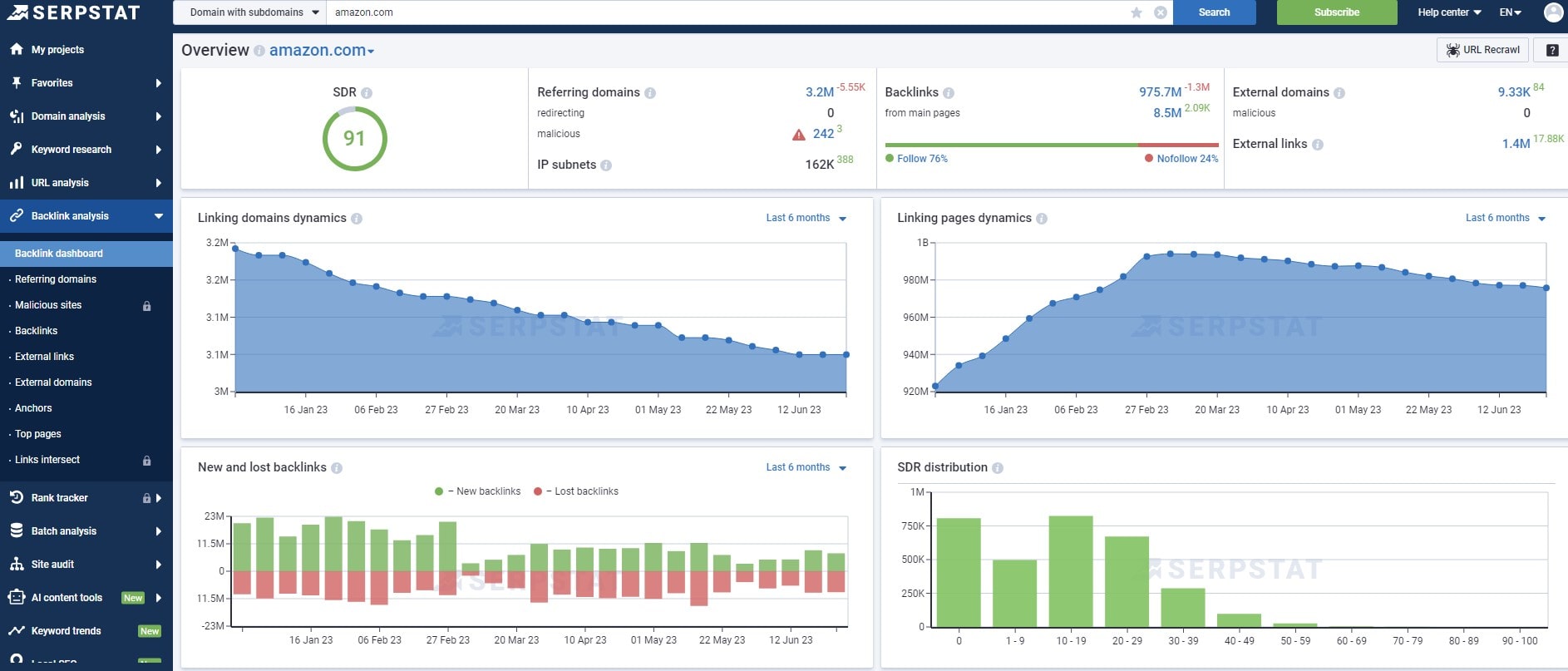
Growing a strong root system for your landscaping company is similar to developing high-quality backlinks for SEO in the digital world; they support and establish the authority of your website. Let’s develop a search engine optimized plan to get these important contacts in the landscape sector.
Powerful Landscaping SEO Link-Building Techniques
Find chances in your professional network to start, particularly with landscaping SEO. Working with vendors, neighborhood companies, and trade associations, have your landscaping website connected to their platforms. Putting out excellent, educational landscaping content will draw backlinks on its own. This might be how-to manuals on the latest trends in landscaping design or environmentally responsible gardening advice, all search engine optimized. To raise its exposure and shareability in the SEO landscape, promote this material on social media and in industry forums. For landscape SEO in particular, Backlinko claims that quality in link building is more important than quantity. Get links from reliable landscaping and home improvement websites to increase your SEO.
Typical Links to Avoid in Landscaping SEO
When it comes to landscape SEO, specifically, stay away from short cuts like purchasing backlinks or taking part in link exchange programs. Penalties could follow from these acts since search engines see them as attempts to rig SEO rankings. Don’t link to low-quality or irrelevant landscape industry websites either. Credibility and search engine optimization of your website may suffer from such links. According to Moz, concentrate on creating links that actually benefit your readers and increase the authority and relevance of your website in the SEO landscape.
In landscaping SEO especially, creating high-quality backlinks takes time, work, and an emphasis on relationships and content. Like caring to a garden, it’s a slow process that, when executed well, may result in major development and stability for your landscaping company’s internet SEO. Put down your gardening tools, and go to work creating those digital bridges; the SEO health of your landscaping website depends on it.
Utilizing Social Media for SEO
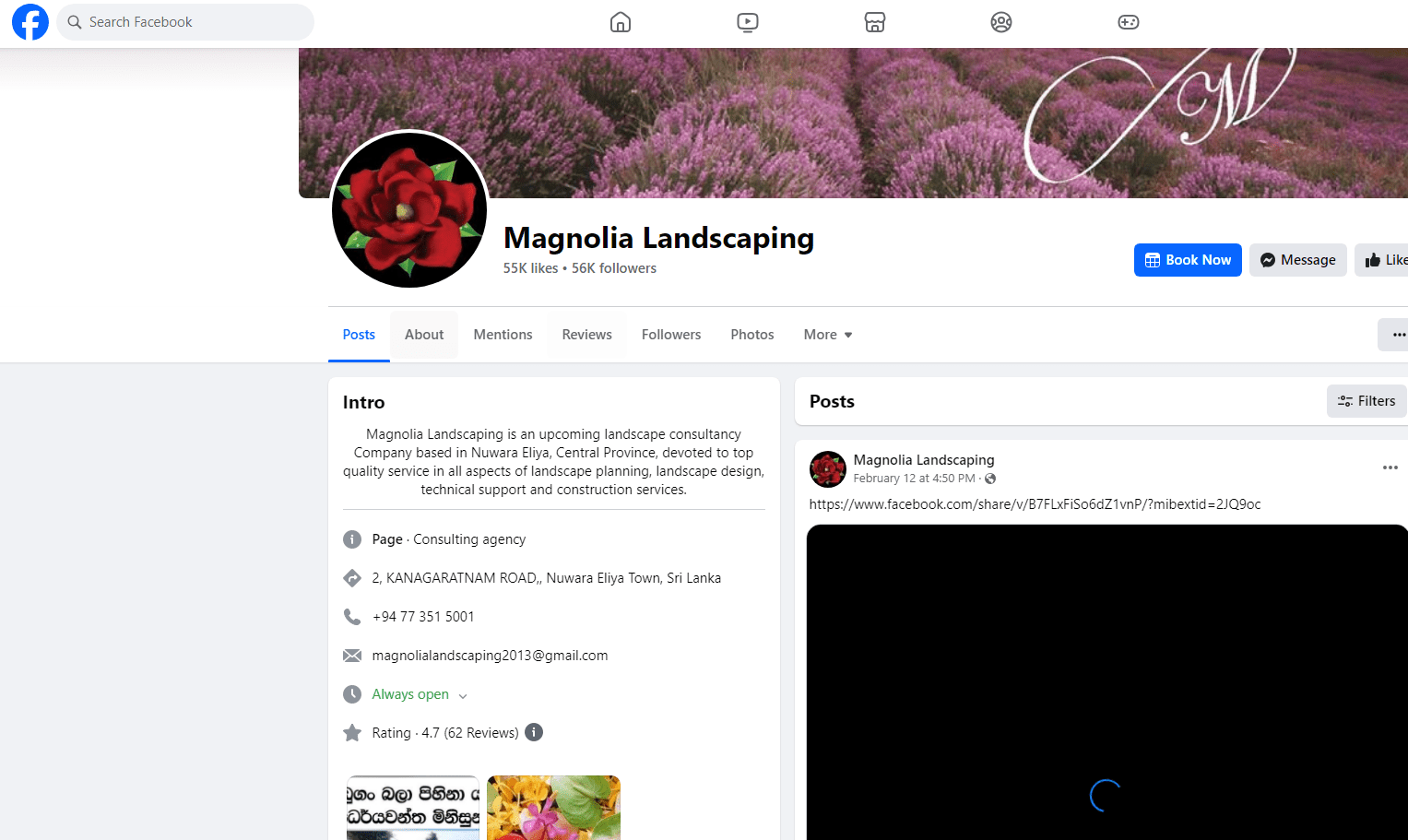
Landscapers need social media for growth and awareness, same as plants need sunlight. Social media is a terrific tool for enhancing your SEO efforts in the modern digital era. Let us look at how to increase the internet presence of your landscaping company using social media.
Online Resources for Landscapers
Choosing the right social media platforms is crucial. Landscapers find sites like Pinterest and Instagram to be perfect because they are mostly visual. Highlight your landscape projects, makeovers, and design ideas. Your audience is drawn in and the visual appeal of your brand is increased by this visual content. Longer material, such as blog articles, can be shared and professional groups and local communities can be engaged with on Facebook and LinkedIn. Sprout Social claims that by bringing traffic, social networks can improve the exposure and search engine ranking of your website.
Themes for Content
As varied as the flora in a garden should be your content. Add advice about landscaping styles, sustainable gardening techniques, or garden upkeep. Videos and instructions on DIY garden projects or landscaping methods can captivate your viewers and promote sharing, hence increasing your following. User-generated material, according to Hootsuite, gives your profile more genuineness, boosts interaction, and fosters a sense of community around your company. Your search engine optimization approach must fully utilize social media; it goes beyond content creation to encompass relationship-building, audience participation, and more website traffic. A well-run social media account draws in prospective clients just as a well-kept garden does. Put those digital seeds in the ground now, and observe how your online presence develops.
Monitoring SEO Performance and Analytics
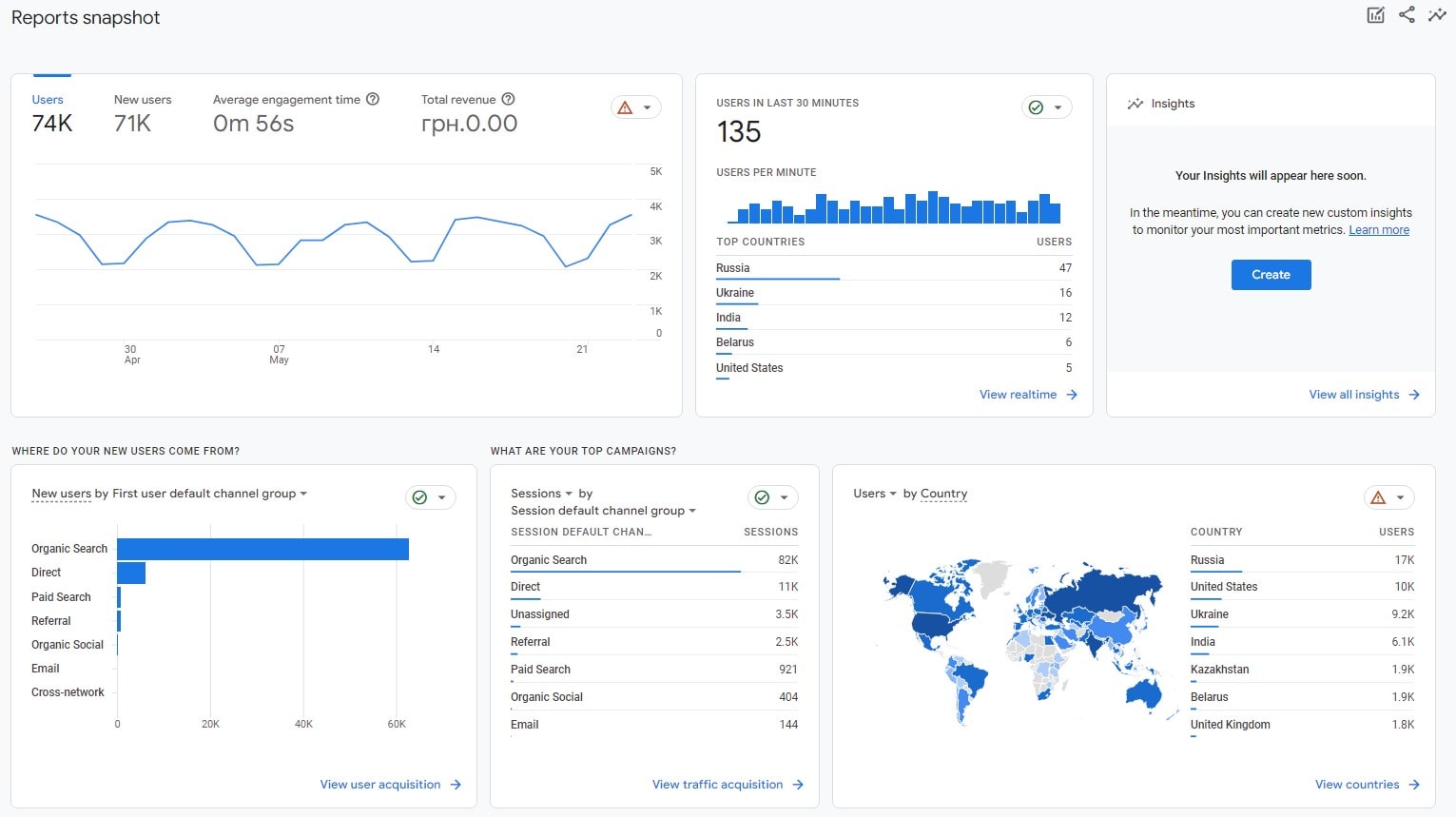
Analyzing your SEO results is comparable to checking the weather; it helps you plan and modify your tactics for maximum expansion. The continually shifting field of SEO requires constant monitoring and understanding of website performance data.
SEO Intelligence Tools
Good tools are the first step toward effective monitoring. A basic tool for seeing the traffic, user activity, and levels of engagement on your website is Google Analytics. It lets you see which pages are drawing the most traffic and how those people are engaging with your material. Google Search Console is a further crucial tool that offers information about how visible your website is in Google search results. More sophisticated data are provided by programs like SEMrush or Moz, which include competitor comparisons, backlink analysis, and keyword rankings. Use these tools to identify areas that need work and to learn more about your SEO performance. It also shows you how Google sees your website and points up any problems that can lower your ranks.
Analysing SEO Statistics
It takes interpretation of your SEO data to make wise choices. Track trends in the traffic sources to your website: are direct visits, organic search, or social media the main sources of visitors? Analyse the keywords that drive the greatest traffic and, more crucially, turn visitors into leads. Watch your bounce rate; it could mean that visitors are finding your website difficult to use or that they are not finding what they are searching for. To guarantee you obtain high-quality connections that increase the authority of your website, keep an eye on your backlink profile as well. As Search Engine Land notes, you may improve the outcomes of your SEO approach by routinely examining and evaluating these indicators.
It takes constant effort to track and examine your analytics and SEO performance. It comes down to knowing what functions and what doesn’t and modifying as necessary. Upholding a good degree of SEO will help your landscaping business grow and prosper online. Recall that the secret to success in the SEO world is ongoing awareness and flexibility.
Staying Updated with SEO Trends

In the always shifting field of SEO, following trends is like to pruning a garden; you have to maintain it beautiful and healthy. Being up to date with SEO developments is essential for landscapers operating in the digital era to expand and be seen online. Let us investigate how you could keep ahead of the ever-changing SEO scene.
Keeping abreast on SEO developments requires ongoing study. Reading trade blogs and websites on a regular basis, including Search Engine Journal, Moz, and SEMrush, can give you important information about the newest tactics and algorithm changes. These sites include a ton of material, from in-depth pieces to brief advice, to keep you up to date on SEO best practices. Additionally helpful are webinars and online conferences, which provide chances to network with peers and pick the brains of SEO professionals.
Meeting up locally or online in SEO groups can be quite beneficial. Talks in Reddit’s SEO community or Webmaster World forums can provide many viewpoints and useful guidance. These websites enable you to share your challenges and experiences and stay informed about what works well for other industry professionals.
To keep up with SEO developments, one must be willing to learn and change. It’s about knowing the surroundings, utilizing the appropriate equipment, and putting the ideal strategies into practice to guarantee growth, much as landscaping. Maintaining knowledge and relationships with the SEO community can help you make sure your landscaping company succeeds in the cutthroat internet market. Recall that the only thing that never changes in the SEO industry is preparation for it.
Consequence
In the always changing field of SEO, like in landscaping, growth and adaptation are essential. We’ve covered all the groundwork for landscapers’ SEO, from the fundamentals of keyword research to the skill of being up to date on trends. Recall that the trip continues from here. Learning digital landscaping is a continuous and everlasting process. The possibilities fascinating you? Explore the world of SEO further with more perceptive posts on Plerdy’s blog. Every article serves as a stepping stone to more accomplishment and knowledge. And never forget that Plerdy is your best option for practical knowledge and instruments to monitor the success of your website. Together, let us develop your web presence and make it a thriving digital environment.
